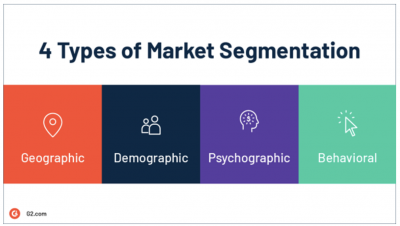
Stratification can occur in both a social sense and a statistical context. Let’s define what stratification is, how it compares or contrasts with segmentation, the benefits of stratification and how best to accomplish it.
Overview: What is stratification?
Webster’s dictionary defines stratification as: formed, deposited, or arranged in stable layers or strata. The word layers seems to infer a vertical orientation. Social scientists have defined social status in terms of layers.
The caste system is a classical example of a social stratification. Caste systems are closed stratification systems in which people can do little or nothing to change their social standing. Your frequent flyer status is an example of an open stratification system. The different strata enjoy varying degrees of benefits, but you are free to move up and down the strata.
In your organization, you might stratify by organizational level. Are there differences associated with being a president, vice president, director, manager, supervisor, or operator? Again, this is an example of an open stratification system where strata matters.
You often hear about the stratification of data. What does that mean? Just like the social definition, you can vertically differentiate between levels of your data. You could collect data on a monthly basis, weekly, daily, or hourly. The purpose of doing this with your data is to analyze whether there are differences between the different strata relative to the statistical question you’re trying to answer.
You can collect and analyze data at the corporate, division, plant, department, or machine levels. Again, the purpose is to determine if the different levels have any influence or impact on the information contained in your data. Does the absentee rate vary depending on whether you examine it at the division level or the department level? How about for turnover? Would you have to do something different to improve at the division level versus the department level?
Sometimes, you hear the word segmentation used interchangeably with stratification. Segmentation is different, though. Whereas stratification refers to a vertical hierarchy and differentiation, segmentation refers to a horizontal differentiation without hierarchy.
In marketing, for example, there are four common segmentations. They are:

Image source: G2.
You can segment your customers by geography, meaning you will differentiate customers by where they are located in a country, city, or other geographic area. There is no hierarchy; they are just different. However, if you stratify them by whether they are yearly, monthly, weekly, or daily buyers, then you have a vertical differentiation, or stratification.
3 benefits of stratification
Stratification allows a deeper dive into your data to determine whether one strata has different characteristics than another.
1. Differentiate between levels
One common statistical question is whether there is any difference between X and Y. By analyzing your data by strata, you will be able to answer that question.
2. Visualize breadth of data
By viewing the entire hierarchy of your stratification, you will be able to visualize the extent of the levels involved.
3. Greater precision
Exploring the data at the plant level will be of greater resolution than at the corporate level. At the corporate level, the data contains the effects of all the underlying strata. This provides for less discrimination of the data and its subsequent analysis.
Why is stratification important to understand?
The purpose of stratification is pretty simple, but you will want to understand some of the details to do it correctly.
Stratification versus segmentation
If you intend to slice and dice your data for greater insight, be sure you understand the difference between stratification and segmentation.
The role of sample size
The amount of data you have at each strata will affect the type of analysis you can do. Be sure to understand the size of the data sample needed to do a proper analysis.
How much stratification is really needed
Only stratify deep enough to answer your business or statistical question. Try not to be tempted to go as far as you can because you think it would be cool to do it. Data and analysis costs time and money. More is not always better.
An industry example of stratification
The HR department was tasked with analyzing the increasing turnover in the company. Their first look at the data showed that the highest number of people leaving was at the operator level. They were ready to start looking for solutions to reduce operator turnover, but the HR manager driving this project was a certified Six Sigma Green Belt and suggested that maybe they should analyze the data a bit more.
They had already stratified the data by organizational level, and there was no question that the operator level had the most people leaving. The HR manager suggested they look at the data as percentage rate of turnover by strata rather than gross numbers. What they found turned their thinking around.
It turned out that the rate of turnover was the highest at the director level despite the gross numbers being small relative to the operator level. The cost and impact of a director leaving and being replaced was magnitudes higher than an operator. The reasons for leaving at the director level are more complex than at the operator level. While the team continued to address the turnover at the operator level, they refocused their efforts on understanding and reducing director turnover.
3 best practices when thinking about stratification
To paraphrase Goldilocks, you don’t want too many or too few stratifications, but just the right amount.
1. Segmentation and then stratification
If it’s feasible, you might want to first segment your data and then drill down through stratification. You might want to segment your customers by location before stratifying them by the amount of business they give you.
2. Too many strata and not enough data
If you drill down too far and split the data too much, you may not have enough data points for an individual strata, thereby limiting the analysis you can do.
3. Decide on your strata ahead of time
Deciding how far down you want to stratify before collecting data will inform you of the amount of data you’ll need to collect to do a statistically valid analysis. Don’t wait until after you have your data to decide how much stratification that you want.
Frequently Asked Questions (FAQ) about stratification
What is a stratified sample?
If you suspect that different strata may have different characteristics, you may want to use a stratified sampling strategy. In this method, you will randomly select a specific number of data points from each strata proportional to the size of the strata. Once combined, your analysis will be representative of the whole population, but with a proportional representation of all the levels you explored.
What is the difference between stratification and segmentation?
Stratification looks at your population or data in a vertical fashion, where the vertical strata have some hierarchical relationship. Segmentation looks at your population horizontally and breaks it into different groups that don’t necessarily have any hierarchy or preferential relationship.
How far down should I stratify my data?
Go far enough to give you the information necessary to answer your business or statistical question. Too much stratification may provide too much information and limit your analysis if the data is broken down into too many levels. Too few levels or strata may not give you the resolution or insight needed to do a satisfactory analysis.
Final comments on stratification
Stratification is the subdividing of your data into a hierarchy of less and less detailed levels. This will allow you to gain a deeper understanding and differentiation of the smaller and smaller subcategories and provide a more detailed look and analysis of your data.